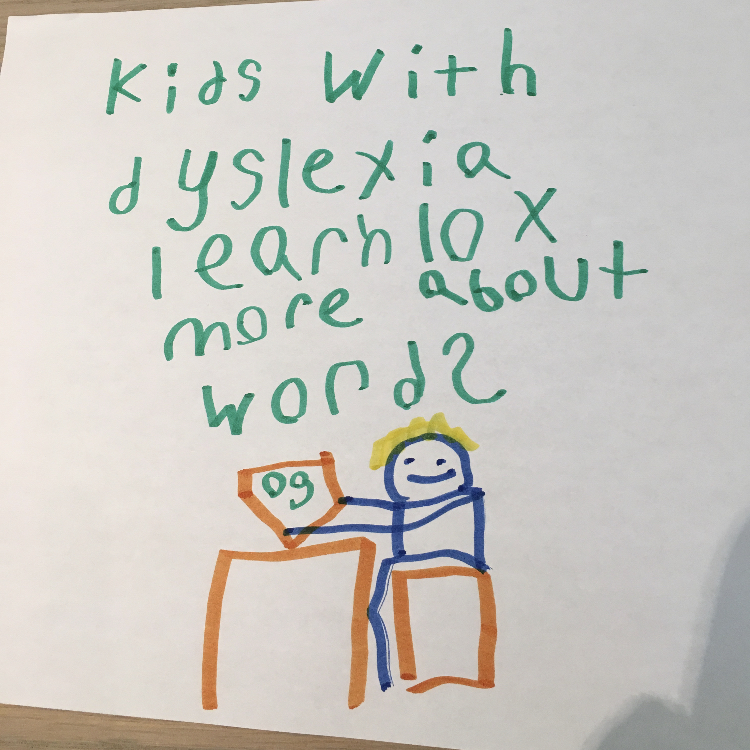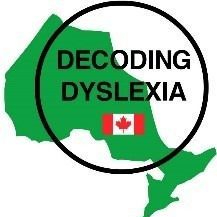dyslexia facts. top 10.
1. Dyslexia is a very common learning difficulty that makes it hard — but not impossible — to read, write and spell. This difficulty was first identified in 1877 as “word blindness.” Today, it’s estimated that about 6 to 17% of the world’s population are dyslexic (J. Fletcher et al, 2007, p. 105). At least 2 children in every Ontario classroom are dyslexic.
2. Dyslexia is a neurobiological condition that is often inherited, meaning it runs in families. It’s on a spectrum, from mild to severe. Dyslexia is not related to intelligence nor is it a vision problem. Dyslexia can affect anyone no matter their intellect, sex, race, nationality or socioeconomic status.
3. Dyslexia is typically diagnosed or described as a type of learning disability or specific learning disorder (although many in our community prefer the term dyslexia). Dyslexia is the most common learning disability: 80% of all children identified with a learning disability are dyslexic. In Ontario, students with learning disabilities are the largest category of students — more than 40% — who are eligible to receive special education services. However, this large group of children don’t receive the early identification and intervention they need to learn to read in public school. Many parents pay for private tutoring and schools, or teach their own children to read — or their children go without.
4. Many children and adults with dyslexia have more than one “exceptionality,” such as dysgraphia, dyspraxia, dyscalculia, giftedness, ADD/ADHD or central auditory processing disorder (sometimes at a higher rate than in the general population).
5. There is no “cure” for dyslexia, nor do children “outgrow” it. Early educational interventions are effective in limiting the long-term negative impacts of dyslexia: The Ontario Psychological Association recommends that students can and should be identified with dyslexia as early as kindergarten. Currently in Ontario, most children are not diagnosed with dyslexia until grade 3 (and after) when they are already falling behind their peers in many areas of learning. This is called the “wait to fail” model (Harvard Graduate School of Education).
6. All children can learn how to read, and that includes children with dyslexia. Students with dyslexia need effective, evidence-based structured literacy reading instrution, and the earlier they get it, the better. Reading interventions are most successful in kindergarten and first grade (Harvard Graduate School of Education). However, dyslexic students can learn to read at any age. Read more about the evidence for structured literacy and where to get help in your area.

7. Structured literacy is essential for struggling readers, and benefits all. We know that teachers want to help all children learn to read; however, in Ontario, colleges of education are not providing teachers with the depth of knowledge and skills necessary to allow them to effectively identify and teach a child with dyslexia how to read.
8. Canada has a literacy gap that greatly affects the dyslexic community. Children with dyslexia show very sizeable education achievement gaps and outcomes in comparison with neurotypical students (a fact that prompted the Ontario Human Rights Commission Right To Read inquiry in 2019). Children and adults with dyslexia are at higher risk for mental health challenges, homelessness, unemployment and abuse.
Impacts of unsupported dyslexia: statistics
- In Canada, 40% of students with LD, including many with dyslexia, experience mental health issues including anxiety and depression
- A survey by the Learning Disabilities Association of Canada found that: “almost 50% of adolescent suicides have a diagnosis of a learning disability
- In Canada, Patterson et al. (2012) found that dyslexia was overrepresented within the homeless population
- Statistics Canada research indicates that people with “learning limitations,” including dyslexia, experience under-employment and unemployment at a much higher rates
- Adults with dyslexia are more than five times as likely to have suffered physical abuse
- Research from the Literacy and Policing Project indicates that 65% of Canada’s incarcerated population reads at less than a grade 8 level of literacy. International research indicates that a large majority of people who are incarcerated are dyslexic
9. With support, dyslexic children can learn alongside their peers and achieve their full potential. In fact, some of the world’s greatest scientists, artists, and entrepreneurs are dyslexic. Researchers are now studying the possible strengths that dyslexic brain differences may bring, such as problem solving and visual-spacial skills (“seeing the big picture”). Many dyslexics see the positive side of “thinking differently.” Learn about dyslexic strengths (Made By Dyslexia video).
Research into dyslexic strengths:
- A study by Cass Business School identified that 30% of highly successful entrepreneurs are dyslexic; many people with dyslexia say that dyslexia has taught them skills, like reslience and a strong work ethic, that have helped them succeed at school and work
- A study by the University of California found that: “Children with dyslexia show stronger emotional responses [and] can confer neurological strengths as well as challenges” ScienceDaily, 1 December 2020
- Report by EY: How dyslexic capabilities can help organisations of the future, Oct. 2019
10. Decoding Dyslexia Ontario is part of a global movement that advocates for greater dyslexia awareness, early interventions and effective reading instruction so that all children learn to read. Our mission is achievable! Join us!
